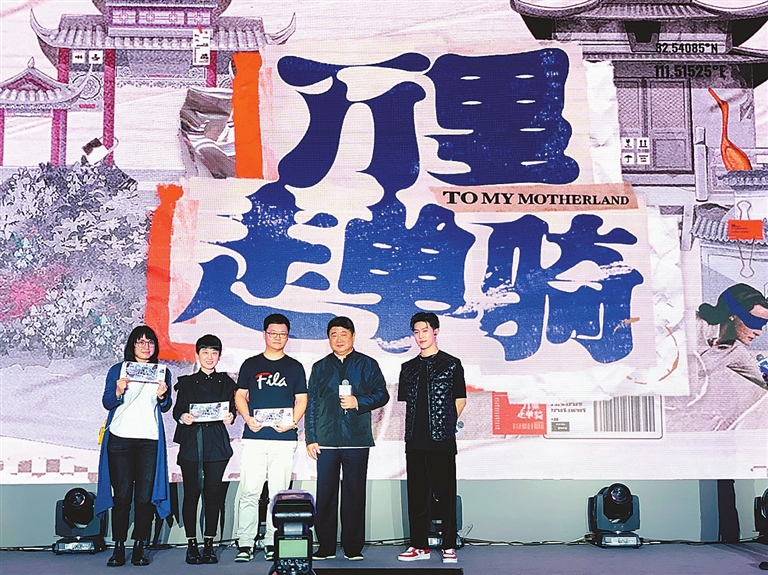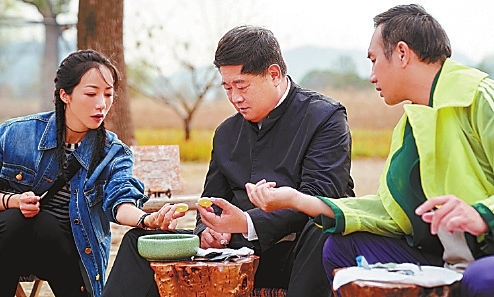

FORMER Palace Museum director Shan Jixiang might be one of the most recognized cultural icons in China. The man worked as director of the Palace Museum in Beijing for over seven years before his retirement in 2019. Before that post, he had served as director of the National Cultural Heritage Administration, on par with a vice-minister. During his tenure at the museum, or the Forbidden City, he frequently delivered public lectures all over the country, sharing his experience, with humor, of managing one of the country’s most important cultural venues. Shan actively appeared in media to answer questions or confront controversy. Shan is even recognized on the street where people have taken photos with him, which is uncommon for museum officials in the country. Now, the 67-year-old has a new platform to promote cultural heritage. “The Shape of Culture,” a 12-episode reality show that premiered on Zhe-jiang TV on Sunday, presents UNESCO World Heritage sites in China. The show is also on streaming platforms Tencent, iQiyi and Bilibili. China has inscribed 55 sites on the UNESCO World Heritage list, tied with Italy in first place as the country with the most sites. In China, more than 300 million visits were recorded at the sites in 2019, according to the National Cultural Heritage Administration. Shan says some people visit such heritage sites only to “check mark” them as visited. “But why is the value outstanding? How do these sites benefit a local community? These stories need to be told.” In each episode of the show, Shan leads celebrities — actors, actresses, comedians and singers — to explore a World Heritage site, joined by other experts and local people. “I’m not an actor,” Shan says, smiling. ”I cannot follow a designed script, and my lines are impromptu based on my experiences. But I don’t want the show to be a documentary either.” Shan highlights the importance of natural communication, but he also understands that the reality show needs to balance public entertainment and academic accuracy. Following the success of the first season of “The Nation’s Greatest Treasures” in 2017, variety and reality shows featuring cultural relics and museums have mushroomed on Chinese screens. However, most still focus on “movable” artifacts placed indoors. Shan is asking a wider audience to pay attention to the huge heritage sites outdoors. A good start in that direction was made by featuring the archaeological ruins of Liangzhu in Hangzhou, capital of Zhejiang Province, in the debut episode of “The Shape of Culture.” Liangzhu dates back 5,300 years and is known for its developed waterways and dams, and its rice-growing and jade-worshipping civilization. The inner section of the city covers 3 square kilometers, roughly four times the size of the Forbidden City, according to the show. “The structure is a lasting legacy of urban construction in China,” Shan says. “It provides evidence of China’s 5,000 years of uninterrupted civilization.” But today one can only see, from the ground level, the basic landscape, terraces, and some remains of earthen dams and walls in the ruins. That is why Shan is trying to boost public imagination. Although he is a green hand in craftsmanship, Shan leads other participants in the show to experience the process of making jade items, which will probably take people back to the heyday of the jade-worshipping civilization and recognize its significance. While exploring lesser-known corners of heritage sites, the celebrity guests, accidentally or not, also display another side of their personalities, which may be unfamiliar to fans. For instance, in the debut episode, actress Han Xue skillfully monitors a drone to get a better view of the dam site in Liangzhu. In the same episode, singer Ma Boqian questions whether an earthen relic he is standing on is part of the city wall considering its flat appearance. You don’t see screen idols discussing ancient myths every day. Nevertheless, Shan says, the laypeople’s points of view may also lead academics to think deeper about the sites from fresh angles. He says the significance of World Heritage sites can be better reflected through their interactions with a wider community. “I am glad to see such sites haven’t become pure tourist destinations after getting the UNESCO World Heritage status and that local people’s dignity and interests haven’t been sacrificed for the cost of tourism development,” he says. Consequently, when choosing sites for the show, a key approach was to highlight the harmony between the cultural landscape and local residents. In the upcoming episodes, “The Shape of Culture” will feature a wide variety of heritage sites that have close relation with local communities: Gulangyu Island, a famed 19th-century international settlement, also known as Kulangsu, and tulou, the traditional earthen residential buildings of Hakka people in Fujian Province, West Lake in downtown Hangzhou and ancient villages in southern Anhui Province. Some sites seeking World Heritage status are also included in the program like the ancient tea plantations of Jingmai Mountain in Pu’er, Yunnan Province. Shan predicts that the next production of “The Shape of Culture” might feature large-scale sites, with a wide geographic distribution for a whole season like the Silk Road, the Great Wall and the Grand Canal. “The Shape of Culture” is also the first Chinese reality show that is officially supported by UNESCO. According to Shan, Marielza Oliveira, director of the UNESCO office in Beijing, will be seen in the program in the episode on West Lake. “The show explores a new way for culture-themed shows that heavily rely on indoor studios,” says Leng Song, a media researcher at the Chinese Academy of Social Sciences, adding it is a common ground for reality shows, documentaries and the promotion of fine, traditional culture. “Such crossover shows bring knowledge about World Heritage down to earth.” (China Daily) | 
